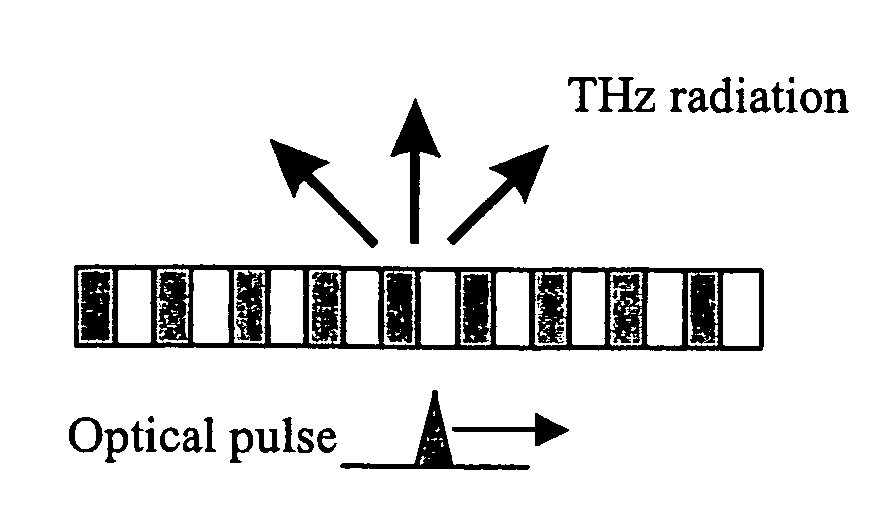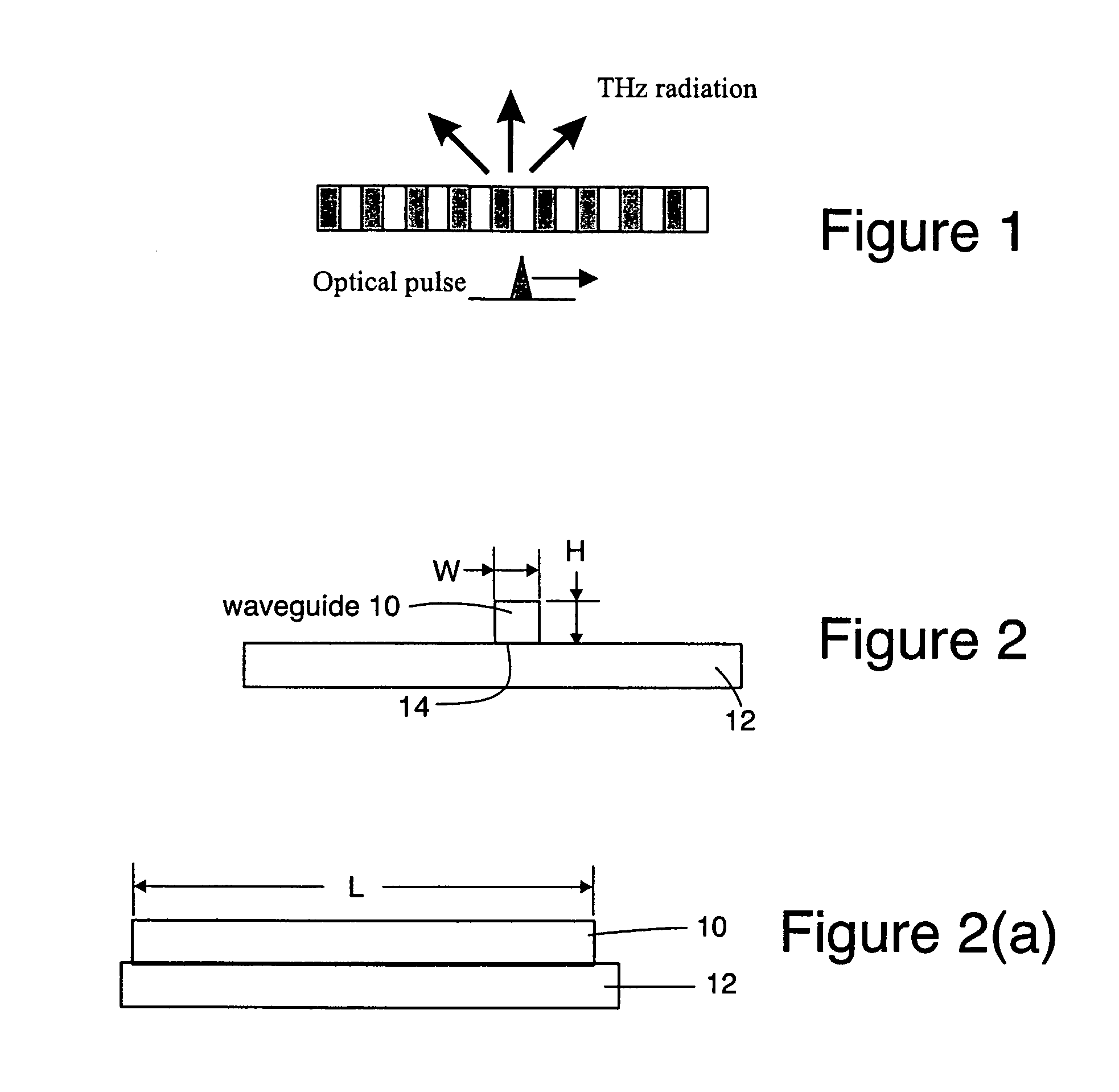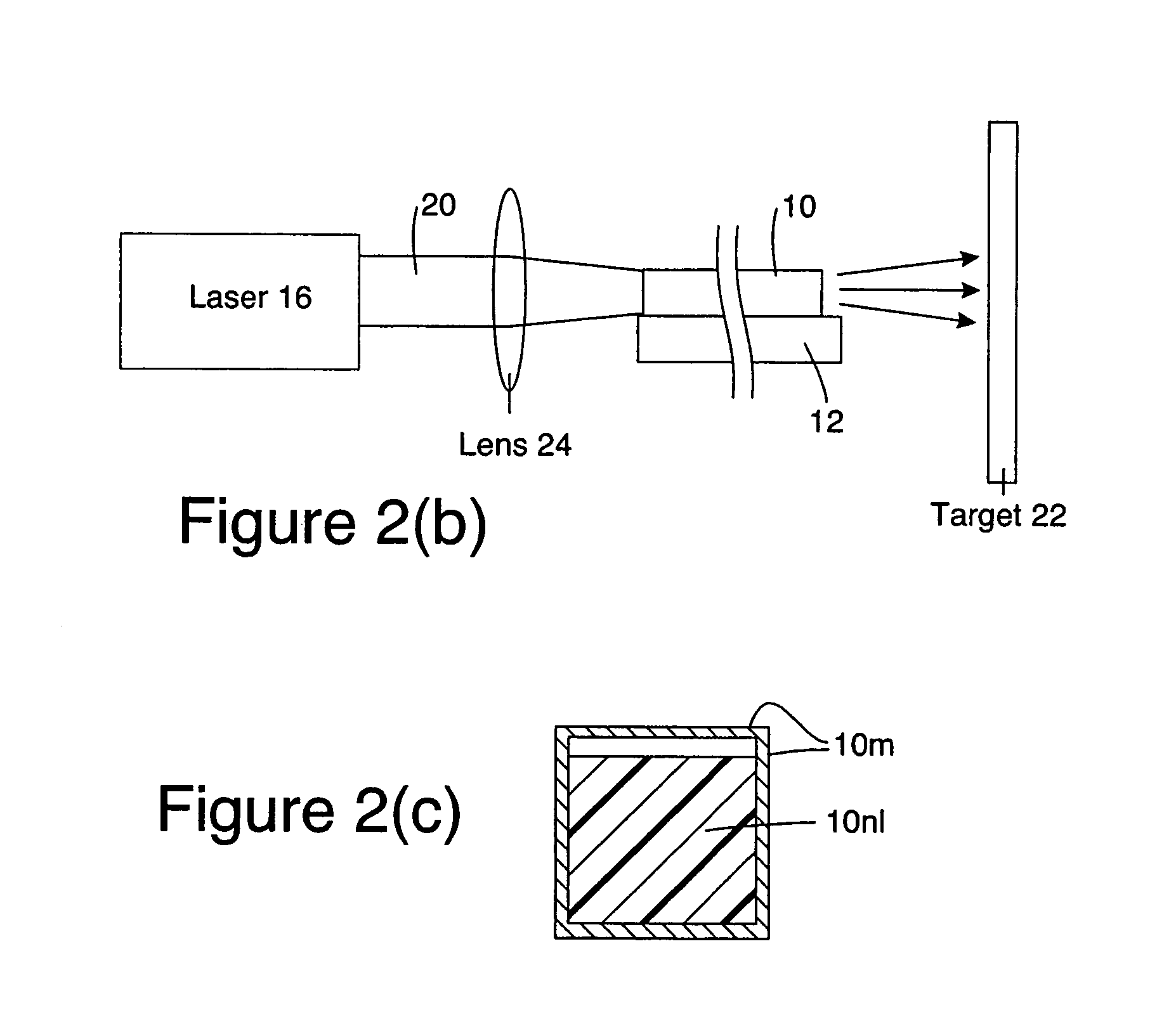Highly efficient waveguide pulsed THz electromagnetic radiation source and group-matched waveguide THz electromagnetic radiation source
a thz electromagnetic radiation source, high-efficiency technology, applied in the direction of instruments, cladded optical fibres, optical elements, etc., can solve the problems of inconvenient operation, inconvenient maintenance, and inability to meet the needs of users, and achieve the effect of reducing the number of fels
- Summary
- Abstract
- Description
- Claims
- Application Information
AI Technical Summary
Benefits of technology
Problems solved by technology
Method used
Image
Examples
first embodiment
[0019]In a first embodiment disclosed herein, a THz electromagnetic radiation source has phase matching.
[0020]In another embodiment disclosed herein, a THz electromagnetic radiation source has phase and group velocity matching.
[0021]The use of optical rectification to generate Terahertz radiation in certain nonlinear materials is a well-know and relatively well-understood phenomenon in the prior art. The mechanism, often referred to as optical rectification, can be explained as follows. An optical field induces a nonlinear polarization P, in the material that is proportional to the local intensity of the optical field. If the envelope of the field is a pulse, moving in a particular direction, then the induced polarization is also a pulse, having the shape and velocity of the optical intensity pulse. In a medium in which the group velocity of the optical and Terahertz waves are the same, the forward-motion of this dipole “grows” a field that has the shape of the derivative of the opt...
second embodiment
[0025]There are several ways to do this for the moving dipole approach disclosed herein. One is to artificially vary the properties of the material so that one achieves a phase velocity match (see the second embodiment discussed below). This can be done in LiNbO3 by periodically inverting the Ferroelectric domains, a process known as poling. Poling forms regions in which the sign of the nonlinear coefficient can be set to be either positive or negative. When an optical pulse moves through material that has been periodically poled, it forms a local dipole moment that flips direction as it moves from one domain to the next. Thus, to an external observer, the dipole appears to be oscillating as it moves forward. See FIG. 1. The radiation field is that of an oscillating dipole, moving forward with a velocity c / ne, where ne is the optical index of refraction of the material. Because of Doppler shifts, the observed radiation frequency depends upon the direction of radiation. However, for ...
PUM
 Login to View More
Login to View More Abstract
Description
Claims
Application Information
 Login to View More
Login to View More - R&D
- Intellectual Property
- Life Sciences
- Materials
- Tech Scout
- Unparalleled Data Quality
- Higher Quality Content
- 60% Fewer Hallucinations
Browse by: Latest US Patents, China's latest patents, Technical Efficacy Thesaurus, Application Domain, Technology Topic, Popular Technical Reports.
© 2025 PatSnap. All rights reserved.Legal|Privacy policy|Modern Slavery Act Transparency Statement|Sitemap|About US| Contact US: help@patsnap.com



